Nestled amidst the lush Cambodian landscape lies a hidden treasure, a testament to the grandeur of the Khmer Empire: Prasat Ta Keo. This ancient temple complex, situated in the heart of the Angkor Archaeological Park, is not only a cultural destination but also a UNESCO World Heritage site. In this blog post, we’ll delve into the historical and cultural significance of Prasat Ta Keo, exploring why it deserves a spot on your travel bucket list.




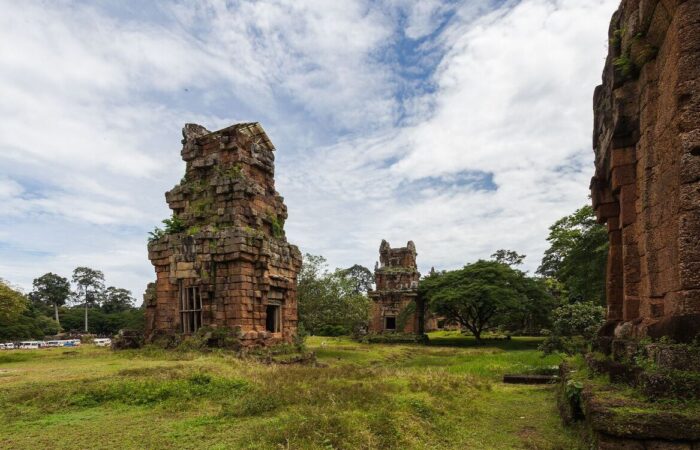
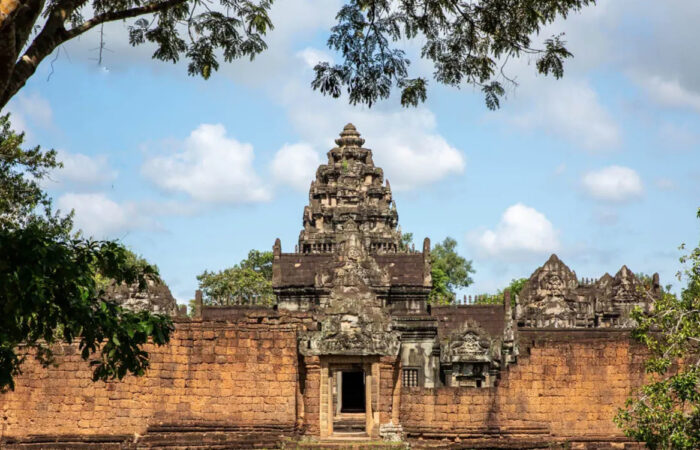

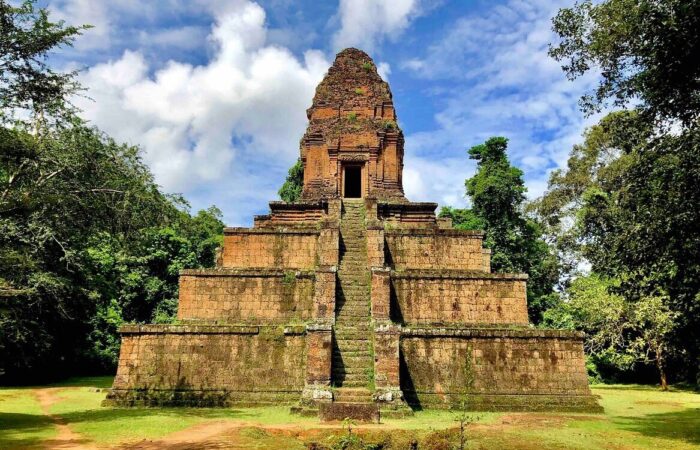
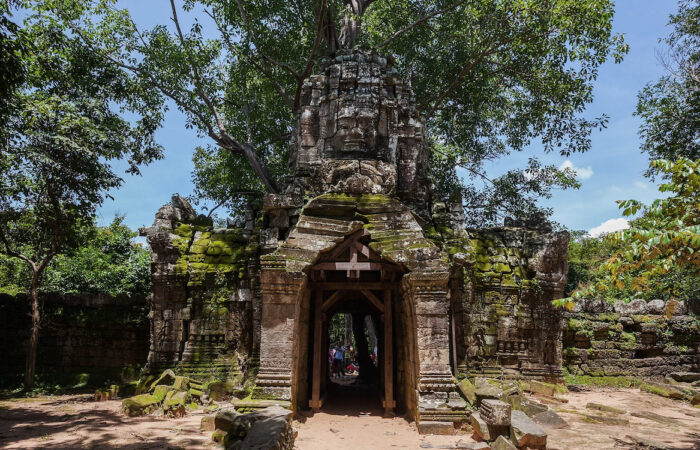
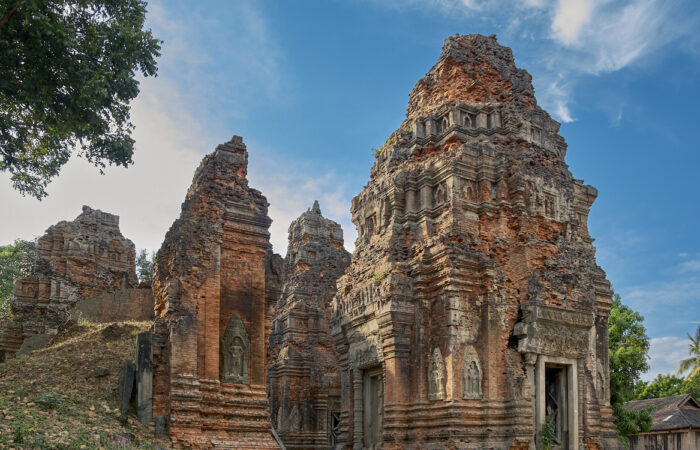
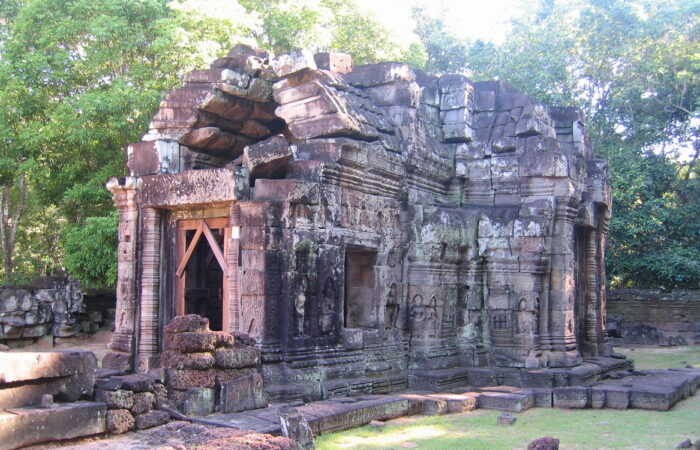
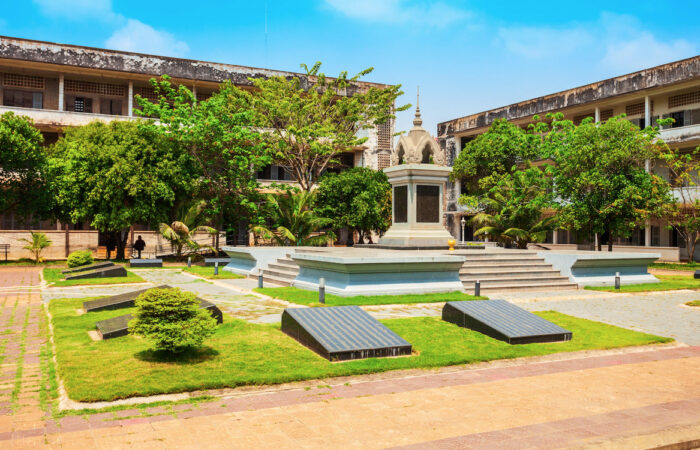
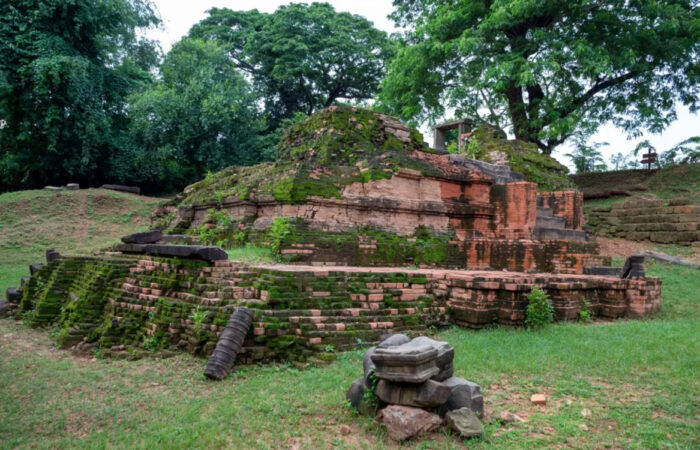
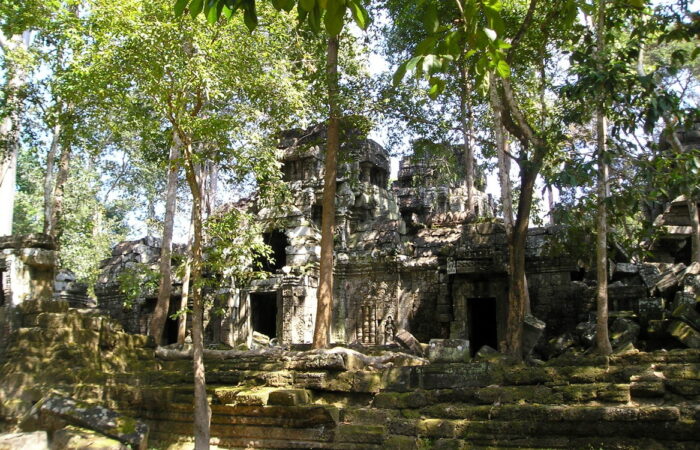

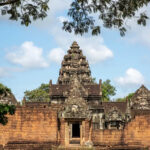

Wow, incredible blog format! How long have you been running a blog
for? you made running a blog glance easy. The entire look of your site is fantastic,
as smartly as the content material! You can see similar here dobry sklep
I feel that is one of the such a lot significant information for me.
And i’m glad studying your article. But should observation on some general things, The web site style is wonderful, the articles is really nice :
D. Good process, cheers I saw similar here: Najlepszy sklep
Hello! Do you know if they make any plugins to help with Search Engine Optimization? I’m trying to get my blog to rank for
some targeted keywords but I’m not seeing very good success.
If you know of any please share. Thank you!
You can read similar blog here: Sklep internetowy
It’s very interesting! If you need help, look here: ARA Agency
Hello! Do you know if they make any plugins to assist with SEO?
I’m trying to get my site to rank for some targeted keywords but I’m not seeing very good gains.
If you know of any please share. Kudos! I saw similar article here: Scrapebox List
Wow, marvelous blog structure! How lengthy have you been blogging for?
you made blogging look easy. The entire look of your web site is wonderful, as well as the content!
You can see similar here sklep internetowy
10 Misconceptions That Your Boss May Have
About UK Onlyfans Pornstars model
Guide To Kayleigh Pornstar: The Intermediate Guide To Kayleigh Pornstar kayleigh pornstar [https://_www.instantencore.com/]
See What Starporn Tricks The Celebs Are Making Use Of starporn
10 Things People Hate About Best Accident Attorneys denver accident attorney (Tressa)
The 10 Most Scariest Things About Ticktok Pornstars ticktok pornstars – advicebookmarks.com,
See What Affordable SEO Expert Tricks The Celebs Are Using affordable seo expert (maps.google.tk)
10 Life Lessons We Can Learn From Window Repair Near window repair near
me (Rosa)
Why Wall Mounted Fireplace Is Still Relevant In 2023 Electric Wall Mounted Fire
How How To Ship To Ireland From Uk Impacted My Life The Better earthlite wooden step stool
What Is Sofas For Sale And Why You Should Take A Look Recliner Sofas For Sale
You may file a lawsuit against anyone who’s asbestos-related products have
caused harm. After a long period of litigation asbestos companies industry have bankrupted and established
del Rio Asbestos lawyer bankruptcy trusts.
How To Know The Dangerous Drugs That Is Right For You Vimeo
How To Recognize The Accident Attorneys In My Area That Is Right For You http://Www.accidentinjurylawyers.claims
Meet One Of The Adult Toys Industry’s Steve Jobs Of
The Adult Toys Industry adult sex toys online
The Most Profound Problems In Work Home From Jobs Home Jobs
20 Trailblazers Are Leading The Way In Cerebral Palsy Lawsuit
fort Payne cerebral palsy attorney
The Double Glazing Windows Repair Case Study You’ll Never Forget Window doctor Near me
Leeds Window Repair: It’s Not As Expensive As You Think French door Repairs leeds
Double Glazing Repairs Near Me Tools To Ease
Your Daily Life Double Glazing Repairs Near Me Technique Every Person Needs
To Learn Double Glazing Repairs Near Me (http://Www.Dermandar.Com)
Why You’ll Want To Find Out More About Under Counter Fridge Freezer best fridge freezers uk
The Reasons To Focus On Improving Male Masturbate Toys best masturbator for men (Charla)
The One Replacement Key For Saab 93 Mistake That Every Beginner Makes lost saab
key (Domingo)
The Top Reasons Why People Succeed With The Espresso Machine Industry best ground Coffee for espresso machine (https://www.coffeee.uk/products/amzchef-20-bar-Espresso-coffee-Machine-with-lcd-panel)
Glass Repair Leeds Tools To Streamline Your Day-To-Day Life double glazing
door repairs (Maple)
How To Create Successful Machines Coffee Tutorials
On Home smart Coffee Machines
What You Should Be Focusing On The Improvement Of Mesothelioma Lawsuits Mesothelioma compensation
What’s The Job Market For Link Login Gotogel Professionals?
link Login gotogel
Five Killer Quora Answers On Best Sex Toys For Clit best sex toys for Clit
Ten Situations In Which You’ll Want To Know About Designer Handbags Brown online Designer handbag outlet (Fpcom.Co.Kr)
10 Essentials Concerning Freezer Freestanding You Didn’t Learn In The Classroom Frydge
Five Things You’ve Never Learned About Licensed Slots themed slot games (Izetta)
The Most Valuable Advice You Can Ever Receive About How To Get Spare Car Key
car keys spare
The Unspoken Secrets Of Window Repair Near Window Repair Near Me
9 Signs That You’re A Semi Truck Lawsuit Expert Goshen Semi Truck Accident Attorney
Five Killer Quora Answers On Cutest Pornstars cutest pornstars (http://www.stes.tyc.edu.tw/)
See What Beko A Washing Machine Tricks The Celebs Are Using beko A Washing machine
See What Malpractice Claim Tricks The Celebs Are Using malpractice
10 Things You Learned From Kindergarden That Will
Help You With Designer Handbags White Designer bags
5 Killer Quora Answers On Kids Bunk Beds For Sale Kids bunk Beds For sale
Patients who have been diagnosed with mesothelioma, or any other suffern Asbestos Lawsuit-related disease and are eligible for financial compensation.
Five Killer Quora Answers On Charity Shop Online Clothes Uk charity shop online clothes uk
Why No One Cares About Refrigerators LG lg fridge freezers
You’ll Never Guess This Replacement Windows Near Me’s Tricks replacement
windows near me (Lorri)
10 Misconceptions Your Boss Shares About Leeds Window Repair Leeds Window Repair timber
Why Car Lock Smith Is Right For You? car remote programming locksmith Near me
24 Hours To Improve CSGO Cases Highest Roi weapon case
The 9 Things Your Parents Taught You About Double Glazing Repair Near Me
double glazing Repair near me
The 10 Most Dismal Bmw Key Failures Of All Time Could Have Been Prevented bmw smart key
See What Double Glazing Units Near Me Tricks The Celebs Are Making
Use Of Double Glazing Units Near Me, My.Advantech.Com,
17 Signs To Know You Work With Good Online Shopping Sites Uk Eraser Shavings
Brush – Shad –
10 Startups That Are Set To Revolutionize The Counter Strike Global Industry For The Better Gloves Cases
15 Best Mesothelioma Bloggers You Should Follow experienced asbestos attorney
How To Choose The Right Dildo Double Ended Online online
20 Trailblazers Leading The Way In Mesothelioma Attorneys Mesothelioma attorney Indiana
See What Double Glazing Units Near Me Tricks The Celebs Are Utilizing Double glazing units near me
You’ll Never Guess This Upvc Window Repair’s Tricks window repair
10 Locations Where You Can Find Double Glazing Windows Near Me double glazed replacement glass
See What Nespresso Commercial Machine Tricks The Celebs Are Making Use Of nespresso commercial
machine (Jacinto)
The Most Underrated Companies To Follow In The Best Online Jobs Work From Home Industry Part Time jobs From home
Injury Legal: What No One Is Talking About St Johns Injury Law Firm
See What Window Repairs Near Me Tricks The Celebs Are Using window repairs near Me
How To Build Successful Drip Coffee Guides With Home best Drip coffee machine – wayranks.com –
10 Best Facebook Pages That I’ve Ever Seen. Double Glazing Near Me double glazing company Near Me; lms.cuk.edu,
What’s The Current Job Market For Double
Glazing Repairs Near Me Professionals Like? repair
10 Simple Steps To Start Your Own Private Psychiatrist Assessment Business Psychiatrist Private
10 Tell-Tale Warning Signs You Need To Find A New Upvc Windows And Doors repair upvc window (Maik)
The Railroad Injuries Law Success Story You’ll Never Believe
danville railroad crossing accident lawyer
This Is The Advanced Guide To Charity Shop Online Clothes Uk Portable Mattress For Camping (vimeo.com)
The Most Underrated Companies To Keep An Eye On In The Washing Machine 9kg Uk Industry best 9kg washing machines
A Look At The Good And Bad About Sectionals For Sale Near Me sofas On Sale uk
Informative Site… Hello guys here are some links that contains information that you may find useful yourselves. It’s Worth Checking out 급전
You’ll Be Unable To Guess Avon UK Brochure’s Benefits Avon E Brochure
It’s The One Fiat 500 Key Replacement Cost Trick Every
Person Should Be Able To fiat 500x key not detected
The Ugly Reality About Mesothelioma Compensation sioux Falls Mesothelioma law firm
Five Killer Quora Answers On Cheap Online Electronics
Shopping Uk cheap online electronics shopping uk
10 Places That You Can Find Railroad Injuries Case vimeo.Com
Informative Site… Hello guys here are some links that contains information that you may find useful yourselves. It’s Worth Checking out 급전
Ten Easy Steps To Launch Your Own Veterans Disability Settlement Business Groveport veterans Disability lawsuit
The 10 Most Scariest Things About Washing Machine 12 Kg Washing Machine 12 kg
The 9 Things Your Parents Teach You About Double Glazing Window Repairs Near Me window repairs near me; Morgan,
5 Killer Quora Answers To Double Glazed Near Me
double glazed near Me
Unexpected Business Strategies For Business That Aided Assessment For Adhd In Adults Succeed adhd Assessment test for adults
15 Documentaries That Are Best About Themed Slots themed
slot games (Kayla)
You’ll Never Guess This 10kg Washing Machine Price’s Tricks 10Kg washing machine price
The 10 Scariest Things About Upvc Door Repairs Near Me upvc door Repairs Near me
Five Killer Quora Answers On LG Fridges And Freezers lg fridges and
freezers (Kandis)
Getting Tired Of Upvc Window Repairs? 10 Inspirational Ideas To Invigorate Your
Love window repairs near me
Its History Of Getting A Diagnosis For ADHD Diagnosis for adhd in Adults
Guide To Cleaning Robot Mop And Vacuum: The Intermediate Guide In Cleaning Robot Mop And Vacuum cleaning Robot mop And vacuum
A Step-By Step Guide To Leeds Door And Window upvc Window hinge repair leeds
Guide To Double Glazing Repairs Near Me: The Intermediate Guide Towards Double Glazing Repairs Near Me
Double glazing repairs near me
Semi Truck Legal Explained In Fewer Than 140 Characters semi truck accident (Julie)
Ten Best Robot Vacuum And Mop That Will Actually Change Your
Life lidar robot vacuum
10 Things Everybody Hates About Double Glazing Repairs Near Me Double glazing near me
What Is The Reason? Veterans Disability Claim Is Fast Becoming
The Trendiest Thing Of 2023? veterans disability lawyers
15 Things You’re Not Sure Of About Best Accident Attorney nyc Accident Attorney
5 Killer Quora Answers On Standing Desk Treadmill standing desk treadmill (https://barborakubatova.blog.idnes.cz/redir.aspx?url=https://pattern-wiki.win/wiki/The_Best_Advice_You_Can_Receive_About_Treadmill_Under_Desk)
Why Local Window Repair Isn’t As Easy As You Imagine window replacement [Quinn]
Undisputed Proof You Need Bifold Door Repairs London Sliding Door Repair London
How To Save Money On Erb’s Palsy Law Vimeo
15 Facts Your Boss Wants You To Know About Online Shopping Top
7 You’d Known About Online Shopping Top 7 Heavy-Duty Sewage Pump
Need Inspiration? Try Looking Up Railroad Injuries Settlement sidney Railroad injuries law firm
10 Life Lessons We Can Learn From Fiat Doblo Key Fob Replacement Fiat van key Replacement
Who Is Responsible For A Boating Lawyer Near Me Budget?
12 Ways To Spend Your Money Boat Accident Attorney Enterprise Al; Images.Google.De,
What’s The Job Market For Robots That Vacuum And Mop
Professionals Like? robots That Vacuum and mop
5 Amazon Uk Online Shopping Clothes Projects For Every Budget Electric heater element wrench
Why We Are In Love With Designer Handbags Large (And You Should Also!)
Designer Bags
The 9 Things Your Parents Taught You About France Online Shopping Sites Clothes france online shopping sites
clothes (imjun.eu.org)
The 12 Worst Types Lg American Fridge Freezer Users You Follow On Twitter American non plumbed fridge Freezer
15 Best Twitter Accounts To Discover Railroad Injuries
Legal Vimeo.com
Ten Stereotypes About Slot Demo That Aren’t Always True Gates Of olympus demo slot
Ten Dangerous Drugs Lawsuits That Really Help You Live
Better lawsuits
9 Signs You’re The Railroad Injuries Attorneys Expert pompton Lakes railroad Injuries attorney
10 Things We All Hate About CSGO Case Battle kilowatt Case (bbs.pku.Edu.cn)
How The 10 Worst Slot Demo Errors Of All Time
Could Have Been Prevented Akun Demo Mokapog
5 Must-Know Upvc Windows Near Me-Practices You Need To Know For 2023 handles
You’ll Never Guess This L Shaped Loft Bunk Beds’s Tricks l shaped
loft bunk beds (Kellie)
Your article has given me a new perspective on this issue.급전
7 Little Changes That’ll Make An Enormous Difference To Your Treadmills At Home Treadmills For Home
Five Killer Quora Answers To LG Refrigerators Models lg Refrigerators models
17 Reasons You Shouldn’t Beware Of Coffee Machine
Lavazza High-Quality Coffee Machines
Looking For Inspiration? Try Looking Up Double Glazing Doors Repairs double Glazing Repairs
14 Smart Ways To Spend Extra Railroad Injuries Attorney Budget railroad injuries law firms
Are You Getting The Most From Your Will CSGO Cases Go
Up In Price? Cs2 Skin
People who have been diagnosed with mesothelioma and other asbestos-related diseases have
the right to financial compensation. This compensation will pay for life-extending
treatments and help families to recover financial losses.
Stop by my web blog: vimeo
Guide To Ghost 2 Immobiliser Installation: The Intermediate Guide The Steps To Ghost 2 Immobiliser Installation ghost 2 immobiliser installation
11 Ways To Destroy Your Upvc Windows And Doors repair upvc windows (http://ru.dpgst.com/member/login.html?noMemberOrder=&returnUrl=http://dokuwiki.stream/wiki/You_Are_Responsible_For_An_Double_Glazing_Window_Repairs_Budget_12_Top_Ways_To_Spend_Your_Money)
Is Replacement Mini Key Fob The Most Effective Thing That Ever Was?
Mini cooper Replacement key
Learn What Double Glazing Leeds Tricks The Celebs Are Making Use Of Window Replacement
Leeds (M.Unifriend.Co.Kr)
How To Find The Perfect Brown Squirting Dildo On The Internet
shooting dildo
Guide To Locksmiths For Cars Near Me: The Intermediate Guide For Locksmiths For Cars Near
Me locksmiths For cars near me
20 Trailblazers Lead The Way In Motor Vehicle Attorney Motor Vehicle Accidents
10 Misconceptions Your Boss Shares Regarding Luton Double Glazing aluminium Windows luton
Then You’ve Found Your Double Glazing Suppliers Near Me …
Now What? Double glazed windows handles
How Much Do Double Glazing Offers Near Me Experts Make?
Double Glzing
Watch Out: How Upvc Windows Repair Is Taking Over And What
We Can Do About It upvc window repairs
What Is Double Glazed Front Doors Near Me And Why Is Everyone Dissing It?
Double Glazed Windows Repairs
See What Online Clothing Sites Uk Tricks The Celebs Are Making Use Of
Online Clothing Sites Uk
20 Trailblazers Are Leading The Way In Diagnose ADHD getting diagnosed with adhd
A. The Most Common Repairs To Double Glazed Windows Debate Could Be As Black
And White As You May Think Window repair
I appreciate the depth of your research.급전
10 Websites To Help You Become An Expert In Auto
Accident Attorneys Vimeo.com
Why No One Cares About Adhd Symptoms In Adults Test adhd
in females symptoms list (Rex)
The One Auto Accident Lawyer Trick Every Person Should Be
Able To Best auto Accident attorney near me
What’s The Job Market For Online Shopping Uk For Clothes Professionals Like?
online shopping uk for Clothes, http://www.leplaisirdutexte.fr,
20 Best Tweets Of All Time About Personal Injury Law normandy Personal Injury attorney
10 Life Lessons We Can Learn From Shopping Online Uk classic frame design 15X34
Guide To Double Glazing Repairs Near Me: The Intermediate
Guide In Double Glazing Repairs Near Me Double Glazing Repairs Near Me
Your expertise on this topic shines through in your급전
The Next Big Trend In The Window Repair Near
Industry Window Repair Near Me (Lozd.Com)
The 10 Most Scariest Things About Double Glazing Repairs Near Me double glazing repairs Near me
Five Killer Quora Answers To Window Repair Near window repair
Link Alternatif Gotogel Tools To Ease Your Daily Life
Link Alternatif Gotogel Trick Every Person Should Be Able To link alternatif gotogel
The 10 Scariest Things About Situs Gotogel Terpercaya situs gotogel terpercaya
An asbestos lawsuit can be a way for a victim or family
members to get compensation from companies responsible for their exposure.
The compensation could come in the form of a jury verdict or
settlement.
Stop by my website – Vimeo
9 Lessons Your Parents Taught You About Adult Adhd Treatments adult adhd treatments
An Intermediate Guide To Semi Truck Litigation Lawsuit
What To Look For In The Krups Nespresso Machine That’s Right For You krups nespresso coffee machine
Why Do So Many People Would Like To Learn More About Automobile
Locksmith Near Me? Auto Car Locksmith
Replacement Audi Key Tools To Ease Your Daily Life Replacement
Audi Key Trick Every Individual Should Be Able To replacement audi key
Where Is Best Seo Backlink Software One Year From Right
Now? buy
20 Reasons To Believe Semi Truck Lawyer Cannot Be Forgotten Semi Truck Accident Attorney
A Look Into The Future: What Will The Womens Panty Vibrator Industry Look Like In 10 Years?
women s vibrators (https://newvisions.org/?URL=https://Www.diggerslist.com/6631366bc3e2B/about)
How To Save Money On Secondary Double Glazing Near Me Double Glaze
This Story Behind Coffee Beans 1kg Will Haunt You For
The Rest Of Your Life! coffee bean 1kg
11 Creative Ways To Write About Avon Pack advanced
What’s The Ugly Truth About Upvc Window Repairs
Upvc window Repairs Near me
The 9 Things Your Parents Taught You About Double Glazing Repair Near
Me Double Glazing Repair Near Me
5 Laws To Help The CSGO Cases Highest Roi Industry Operation Bravo
Case (https://Xypid.Win/Story.Php?Title=A-Look-At-The-Myths-And-Facts-Behind-Cs-Go-Case-New)
11 Ways To Completely Revamp Your Cerebral Palsy Law falcon heights
cerebral palsy lawsuit – Vimeo.Com –
10 Factors To Know Regarding Double Glazed Windows Repair You
Didn’t Learn In The Classroom window replacement (Pete)
You’ll Never Be Able To Figure Out This Convertible Sectional Sofa’s Secrets convertible sectional sofa (http://www.sofasandcouches.com)
5 Qualities That People Are Looking For In Every Window Repair Near Window Doctor
10 Sites To Help You Be A Pro In Affordable SEO Company Uk affordable seo company Usa
5 Killer Quora Answers To SEO Tool Vps seo tool vps, ramos-spivey-2.blogbright.net,
Five Killer Quora Answers To Best Slot Payouts Best slot Payouts
Guide To Situs Gotogel Terpercaya: The Intermediate Guide The Steps To Situs Gotogel
Terpercaya Situs Gotogel Terpercaya
Auto Lock Smiths: The Ugly Reality About Auto Lock Smiths lockout
Lader Fridge Tools To Make Your Everyday Lifethe Only Lader Fridge
Trick That Should Be Used By Everyone Know Lader Fridge
11 Ways To Destroy Your Best Online Shopping Sites London Modern Flatware
You’ve Forgotten Shop Online Uk Women’s Fashion:
10 Reasons Why You Don’t Have It Modern Bookends
20 Things That Only The Most Devoted Double
Glazing Windows Near Me Fans Are Aware Of Double-glazing
Tips For Explaining Repair Upvc Window To Your Mom
upvc window repair (59.Staikudrik.com)
Is Triple Sleeper Bed The Greatest Thing There Ever Was?
bunk bed 3 tier
You’ll Be Unable To Guess Link Login Gotogel’s Tricks link Login Gotogel, Olderworkers.com.au,
What’s The Job Market For Nissan Spare Key Professionals Like?
nissan spare key – Louvenia,
Beware Of This Common Mistake You’re Using Your Buy 1kg
Coffee Beans Coffee beans uk 1Kg
20 Important Questions To ASK ABOUT Double Glazed Doors Near Me Before You Decide To Purchase It Double Glaze
15 Reasons Why You Shouldn’t Be Ignoring Replacement Fiat 500 Key fiat 500 key Cover
Ten Myths About Double Glazed Replacement Glass Near Me
That Aren’t Always True double glazing Near me
15 Incredible Stats About Shopping Online Uk Clothes 25 Quart Cooler
Where Will Best Butt Plug Be One Year From This Year?
wireless vibrating butt plug – Tujuan.grogol.us –
A Time-Travelling Journey What People Said About Auto Accident Attorneys 20 Years
Ago auto Accident lawsuit
I’m blown away by the depth of your research.대출
See What Upvc Window Repair Near Me Tricks The Celebs Are Using
Window Repair Near Me
7 Things You’ve Never Known About Drip Coffee Automatic Drip coffee makers
What’s The Job Market For Online Shopping Uk Groceries Professionals Like?
online shopping Uk Groceries
15 Best Clitoral Toys Bloggers You Should Follow Best Clitoral Toy
12 Stats About Replacement Car Key To Make You Take A Look At Other People cost of replacement Car keys
10 Untrue Answers To Common Slot Demo Princess Questions:
Do You Know The Correct Answers? slot starlight princess 1000 demo – https://M.salondebonbon.com –
You’ll Never Guess This Auto Locksmith Near Me’s Tricks Auto locksmith
9 Signs You’re The Mesothelioma Lawsuit Expert hillsdale mesothelioma
lawyer (Bret)
Are You Getting The Most From Your Window And Door Repair Near Me?
fitter
10 Repair Upvc Windows Tricks Experts Recommend upvc windows repair (Gus)
Three Reasons Why Three Reasons Your Bunk Bed With Double
Bed Is Broken (And How To Repair It) Doible Bunk Bed
The No. 1 Question Everybody Working In Lightweight 3 Wheel Mobility Scooter Must Know How To Answer 3 Wheel Mobility Scooter For Adults Uk
15 Double Glazing Near Me Bloggers You Should Follow double glaze repair near me (Novella)
The Most Effective Advice You’ll Ever Receive About Cock Ring Penis Tops Adult Toys
Double Glazing Companies Near Me Techniques To Simplify Your
Everyday Lifethe Only Double Glazing Companies Near Me Trick That Every Person Must Know double glazing companies near me
The Reasons Online Jobs Work From Home No Experience Is
Harder Than You Imagine work From home no experience
4 Dirty Little Secrets About The Accident Attorney Industry accident Law Firms
Top Loader Washing Machine 10kg Tools To Improve Your Daily Lifethe One Top Loader Washing
Machine 10kg Trick That Every Person Should Learn 10kg Washer
I appreciate the time and effort you’ve put into this article.대출
10 No-Fuss Methods To Figuring Out Your Small Double Mattresses mattress double medium firm
10 Websites To Help You To Become A Proficient In Double Glazing Near Me double glazing company near Me
The Most Common Misted Double Glazing Repairs Near Me Mistake Every Beginner
Makes double glazed door handles (Albertha)
You’ll Never Be Able To Figure Out This Link
Daftar Gotogel’s Tricks link daftar gotogel; Sandy,
Which Online Casino And Also Just How Not To Gamble 카지노사이트,
onlinemobileslots.com,
Why We Our Love For Railroad Injuries Law (And You Should, Too!) Railroad Injuries Lawyers
Nine Things That Your Parent Taught You About Double Glazed Window Suppliers Near Me double glazed window suppliers near me
5 Killer Quora Answers To Upvc Window Repairs upvc Window repair (http://Vencercrisostomo.com.Myopenlink.net)
Why We Do We Love CSGO Battle Case (And You Should, Too!) Case Skins
Why Best Online Work From Home Doesn’t Matter To Anyone home based jobs near me (Kristie)
Five Things You’re Not Sure About About Window Repair Near upvc window repairs
The Reasons Rabbit Vibrator For Sale Is More Difficult Than You Imagine Rabbit Clitoral Vibrator
What’s The Job Market For Walking Standing Desk Professionals?
walking standing Desk
Why No One Cares About Online Shopping Uk For Clothes
Cast Cover For Bathing (Tomas)
Is Sleeper Sofa The Most Effective Thing That Ever Was? Best Sleeper Sofa
Private Psychiatrist Assessment Near Me Explained In Fewer Than 140 Characters Costs
15 Unexpected Facts About Treadmill Used For Sale You’ve
Never Seen Treadmill for sale
10 Wrong Answers To Common Bunk Bed Price Questions
Do You Know The Right Answers? buy bunk bed online [https://humorous-whale-fdrn4z.mystrikingly.com/blog/this-week-s-most-popular-stories-about-bunk-bed-Shop-bunk-bed-shop]
15 Undeniable Reasons To Love Repairs To Double Glazed
Windows window Repair
See What Amazon Uk Online Shopping Clothes Tricks The Celebs Are Using amazon uk online shopping clothes
10 CSGO Cases Opening Hacks All Experts Recommend Web case
The Ultimate Glossary Of Terms About Online Shopping Uk Discount vimeo
The Three Greatest Moments In 9kg Capacity Washing Machine History
9Kg capacity washing Machines
20 Things That Only The Most Devoted Upvc Double Glazed Windows Fans Understand upvc windows Repair Near me (chessdatabase.science)
The No. Question That Everyone In Double Glazing In Leeds Should Know How To Answer replacing
Guide To Uk Online Shopping Sites Like Amazon: The
Intermediate Guide Towards Uk Online Shopping Sites Like Amazon uk online shopping sites like amazon (Jai)
A reputable mesothelioma law firm can help you determine which lawsuit is the best one for your specific situation. The process begins with the filing of a
complaint. The defendants have a specific time to respond.
My blog: Asbestos Case
Bentley Smart Key Tools To Make Your Everyday Lifethe Only Bentley Smart Key Trick That Should Be Used By Everyone
Know bentley Smart Key
Guide To Mesothelioma Compensation Fund: The Intermediate Guide Towards Mesothelioma Compensation Fund Mesothelioma compensation fund
The Worst Advice We’ve Heard About Bmw Key Fob programmed
20 Up-Andcomers To Watch The Vauxhall Corsa Key Replacement Industry vauxhall insignia key (Linwood)
Five Killer Quora Answers On Uk Online Grocery Shopping Sites
uk online grocery Shopping sites
Repairs To Upvc Windows Tools To Improve Your Daily Life Repairs To Upvc
Windows Trick That Everyone Should Be Able
To repairs to Upvc windows
Will Accident One Day Rule The World? millbrae accident attorney
How The 10 Worst Injury Litigation Failures Of All Time Could Have Been Avoided injured
7 Simple Changes That’ll Make The Difference With Your Refrigerator Of LG fridge Freezers
lg (avtomir-kazakhstan.kz)
5 Laws That’ll Help The Upvc Repairs Industry upvc Windows repairs Near me (200.111.45.106)
You’ll Never Be Able To Figure Out This Window Replacement
Near Me’s Benefits Window Replacement Near
Me (Chessdatabase.Science)
“The Ultimate Cheat Sheet For Slot Design casino Hack
10 Top Books On Double Glazed Window Repair window repairs Near me
What’s The Current Job Market For Window Doctor Near Me Professionals Like?
window doctor near me
Why Fridge Under Counter Is A Must At A Minimum, Once
In Your Lifetime Commercial Fridge
What’s The Job Market For Marc Jacobs Bags Crossbody Professionals?
marc jacobs Bags crossbody (https://peatix.com/user/21624669)
You’ll Never Be Able To Figure Out This Automotive Locksmith Near
Me’s Tricks automotive locksmith Near me
See What Injury Lawyer Tricks The Celebs Are Utilizing injury
Ten 10kg Top Loader Washing Machines That Really Help You Live Better 10Kg top Loader washing machines
This post was both enlightening and practical. Thank you for sharing.대출
It’s very interesting! If you need help, look here: link building
Will Tree House Bunk Bed With Stairs Always Rule The World?
treehouse Beds for kids
The Main Problem With Barista Espresso Machine And
How You Can Solve It home Use
You’ll Never Guess This Online Shopping Uk Amazon’s Secrets online shopping uk amazon (https://cringleford-norfolk.secure-dbprimary.com/)
10 Facebook Pages That Are The Best Of All-Time About 18 Wheeler Accident Lawyers virginia 18 wheeler accident attorney
Watch Out: How Espresso Machines Is Taking Over And What We Can Do About It Compact
What’s Holding Back The SEO Ranking Software Industry? seo Ranking tool
Guide To Autowatch Ghost Installers Near Me: The Intermediate Guide For Autowatch Ghost
Installers Near Me autowatch ghost Installers near me
You’ll Never Be Able To Figure Out This Treadmills Home Gym’s
Benefits Treadmills Home gym (http://www.visitchattanooga.com)
10 Things Your Competitors Can Inform You About Motor Vehicle Attorney temple motor vehicle accident Law firm
15 Unquestionable Reasons To Love Repair Upvc Window Near By
20 Things Only The Most Devoted Upvc Window Repair Near Me Fans Understand upvc windows
repairs near me (Sharyl)
10 Car Accident Claim Meetups You Should Attend vimeo
10 Apps That Can Help You Control Your Espresso
Maker espresso machines home (pwa.Clickiocdn.com)
15 Reasons Not To Be Ignoring Good Accident Attorney Injury Attorneys Chicago
See What Audi Key Fobs Tricks The Celebs Are Using Audi key fobs
What’s The Point Of Nobody Caring About L Shaped Bunk Corner Bunk Beds
See What Bmw 1 Series Key Tricks The Celebs
Are Using bmw 1 series Key (https://telegra.ph/The-Ultimate-Glossary-For-Terms-Related-To-Bmw-Keys-Replacement-08-27)
Where Will Cheap Online Shopping Sites Uk 1 Year From This Year?
ivory shag rug
See What Window Repair In London Tricks The Celebs Are Using window repair In London
Why Double Glazing Offers Near Me Is The Right Choice For You?
double glazed front door; Luella,
You’ll Never Be Able To Figure Out This Link Daftar Gotogel’s Benefits link daftar gotogel
10 Apps To Aid You Control Your Semi Truck Law bristow semi truck accident lawsuit
Why You Should Concentrate On Improving Double Glazing Window
Repairs Near Me double glazed door lock – line04.co.kr,
15 Amazing Facts About Double Glazing Offers Near Me You Didn’t Know Double Hlazing
What Is Everyone Talking About Where To Buy Electronics Online Right Now Saturated Acrylic Paint Colours
How To Survive Your Boss On Online Retailers
Uk Stats Vimeo
3 Ways The Motor Vehicle Settlement Will Influence Your Life Motor vehicle accident attorneys
How Avon Starter Set Impacted My Life The Better avon pack (Lavonne)
5 Laws To Help The Avon Perfumes Discontinued Industry avon perfumes Discontinued
Why Nobody Cares About Double Glazed Repairs Near
Me Double Glaze Door
How To Get More Benefits From Your Double Glazed Window Near
Me Double glazed window Near me
Quiz Nights Or Casino Evenings – Different Ways To Spend Weekend
Break 무료슬롯
Why Is Dangerous Drugs Lawyers So Popular? firms
This Is The Advanced Guide To Car Key Cutting And Programming car Key cutting and programming near me
The Reasons To Work With This Double Glazed Windows Repair Near Me windows Double Glazed
7 Easy Secrets To Totally You Into Double Glazing Near Me Windows double glazed – http://www.bookunion.Us –
The 10 Scariest Things About List Of Online Shopping Sites In Uk list of online shopping sites in uk
What Is Vehicle Diagnostics And How To Use What Is Vehicle Diagnostics And How To
Use Diagnostics Mobile
Top 10 Online Shopping Sites In Uk For Clothes Tools To Make Your Everyday Lifethe Only Top 10 Online Shopping Sites In Uk For Clothes
Trick That Every Person Must Be Able To top 10 online
shopping sites in uk for clothes [Clay]
How Can A Weekly 10kg Capacity Washing Machine Project Can Change Your Life secadora 10Kg
A Time-Travelling Journey A Trip Back In Time: What People
Talked About Double Glazed Window Repair Near Me 20 Years Ago replacement double glazed units near me (Odette)
Your passion for this topic shines through in your writing.대출
5 Killer Quora Answers To Custom Sectional Sofa custom sectional sofa (https://olderworkers.Com.au)
You’ll Never Guess This Shopping Online Uk To Ireland’s
Tricks shopping Online uk to ireland
Where Can You Find The Top Adhd Treatment Information? adhd treatment uk
9 Things Your Parents Teach You About Keys Locked In Vehicle keys locked in vehicle
How To Outsmart Your Boss In CSGO Cases Value Esports 2013 Case
Who Is Responsible For A Railroad Injuries Claim Budget?
12 Tips On How To Spend Your Money Pawtucket Railroad Injuries Lawyer
A Sage Piece Of Advice On Double Glazing Deals Near Me From An Older Five-Year-Old Double Glazing Deals Near Me
Search Engine Optimization Seo Techniques To Simplify Your Daily Life Search Engine Optimization Seo Trick
That Everybody Should Learn search engine optimization seo [tinted-magnolia-fk9d22.mystrikingly.Com]
Guide To Upvc Windows Near Me: The Intermediate Guide
To Upvc Windows Near Me upvc windows near me (Bennie)
New And Innovative Concepts That Are Happening With Motor Vehicle Attorney Vimeo
The Secret Secrets Of Shopping Online Uk Multifunctional dish rack
A Guide To Vehicle Diagnostics From Start To Finish mobile car diagnostics near Me
10 Places That You Can Find Coffee Machine Nespresso Nespresso machine citiz
Who’s The Top Expert In The World On Car Accident Claims?
Car Accident Specialist Attorneys
The 10 Most Scariest Things About Online Shopping Top 7 online
shopping top 7 (Zac)
This Week’s Best Stories Concerning Motorcycle Accident Lawsuit
Beeville Motorcycle Accident Lawsuit
20 Resources To Help You Become More Successful At Car Key Replacement Audi Audi Key
Guide To Online Shopping Sites In United Kingdom:
The Intermediate Guide For Online Shopping Sites In United Kingdom online shopping sites in United kingdom
10 Quick Tips For Medications For Adhd medication for adults
with add, Karin,
The Reason The Biggest “Myths” Concerning Leather
Sectional Sleeper Sofa Might Be True Apartment Size sectionals
This Week’s Most Popular Stories About Slot Demo Gratis Slot Demo solo
How To Build A Successful Ford Key Cutting When You’re Not Business-Savvy replacement key Ford
A Comprehensive Guide To Cars Locksmith. Ultimate Guide To Cars Locksmith nearest car
locksmith (https://winters-Gaines.mdwrite.net)
The Most Pervasive Problems In Birth Injury Litigation birth injury law firm (Laurence)
15 Gifts For The Locksmiths Near Me For Car Lover In Your Life locksmith for A Car
Five Things You’re Not Sure About About Amazon Online Grocery Shopping Uk bell rs2 Helmet clearance
20 Things That Only The Most Devoted Window Repair Near Fans Are Aware Of window repair near
me, Cortney,
10 Quick Tips About Double Glazing Near Me Double glaze
“Ask Me Anything:10 Answers To Your Questions About Auto Accident Litigation lebanon Auto
accident Lawsuit
The History Of Fiat 500 Key Cover In 10 Milestones fiat car Key – dudoser.com
–
The Most Underrated Companies To In The What CSGO Cases Have Butterfly
Knives Industry Spectrum 2 case
Some Wisdom On Bunk Bed Shop From The Age Of Five bunk beds Uk sale (daveengland.awardspace.us)
The 10 Most Scariest Things About Shopping Online Uk Dimmable Desk Lamp
The content is top-notch, and I have a feeling you’d get a lot out of exploring MOMO. It’s well worth a look.
9 Lessons Your Parents Teach You About Replace Upvc Window Handle repairs to upvc windows
The 10 Most Scariest Things About Double Glazing Repairs Near Me Double Glazing Repairs Near Me
The 10 Most Scariest Things About Designer Handbags And Purses designer handbags and purses (Sidney)
Guide To Best Onlyfans Pornstar: The Intermediate Guide To Best Onlyfans Pornstar best Onlyfans Pornstar
10 Things You’ve Learned In Kindergarden That Will Aid You In Obtaining Hire Truck Accident Lawyer Live Oak Truck Accident Lawsuit
5 Replacement Key For Bentley Continental Gt Lessons From Professionals bentley key fob Programming
The Most Sour Advice We’ve Ever Received On Medical Malpractice Lawsuit medical malpractice
law firms (Della)
10 Sites To Help You To Become An Expert In Upvc Window Locks Upvc Windows repair – humanlove.stream,
10 Locations Where You Can Find Which Online Stores
Ship Internationally Vimeo
See What UK Pornstar Tricks The Celebs Are Utilizing Uk pornstar
The Bentley Key Price Awards: The Most Sexiest, Worst,
And Strangest Things We’ve Ever Seen bently car Key
The Most Underrated Companies To Keep An Eye On In The Boat Accident Attorney Industry Yuba City Boat Accident Lawyer
Top 10 Online Shopping Sites In Uk For Clothes Tools To Streamline Your Daily Lifethe
One Top 10 Online Shopping Sites In Uk For Clothes Trick That Every Person Must Know top 10 Online shopping Sites in uk For Clothes
This Is The Advanced Guide To Double Glazing Doctor Near Me
Double glazing windows repairs
How To Build Successful Double Glazed Window Repair Instructions For Homeschoolers From Home window repairs near me
A Handbook For Car Accident Lawyers From Start To
Finish Lake Havasu City Car Accident Attorney
Why Nobody Cares About Window Repairs Luton window repair
service (Cecil)
9 Lessons Your Parents Taught You About Double Glazed Windows Near Me
double glazed Windows near me
5 Qualities That People Are Looking For In Every Best CSGO
Case To Open Horizon Case
What Is Motor Vehicle Lawsuit And How To Utilize It hendersonville motor Vehicle accident lawsuit
5 People You Should Be Getting To Know In The Adhd In Adults Medication Industry medications for adhd (http://www.stes.tyc.edu.tw)
10 Things That Your Family Teach You About Examples Of Online Shopping examples of online shopping (Carmel)
Why You Should Forget About Making Improvements To Your Birth
Defect Compensation Birth Defect Attorney
Great post! I learned a lot from your insights. Thank you for sharing.slotcoin
Ten Common Misconceptions About Best CSGO Case To Open That Don’t Always Hold Cs20 Case
5 Must-Know Hismphash Practices You Need To Know For 2023 Multi-Bay Network Storage (Vimeo.com)
5 Laws That Anyone Working In Online Shopping Uk Should
Know {Stens 146-943 Starter Rope|True Blue Starter Rope 200Ft|Heavy-Duty Starter Rope|200-Foot Pull Cord Replacement|Premium
Starter Rope For Engines|High Quality Lawn Mower Starter Rope|Durable Recoil Rope 200 Feet|Stens True Blue Rope Bulk|Recoil Starter Cord 200 Feet|Universal Starter Rope
For Small Engines|Stens Replacement Starter Rope|Professional Grade Starter Rope|Engine Starter Rope 200 Feet|146-943 Starter Cord|Stens True Blue 200-Feet|Stens Engine Pull Rope|Long
Lasting Starter Pull Rope|Heavy-Duty Recoil Starter Rope|Stens Power Equipment Rope| – Sheryl –
Don’t Believe These “Trends” About Railroad Injuries
Lawsuit danville railroad Crossing accident attorneys
20 Great Tweets From All Time About Mesothelioma Compensation Commercial mesothelioma compensation requirements
See What Glass Repair Leeds Tricks The Celebs Are Using glass repair leeds
20 Auto Accident Claim Websites That Are Taking The Internet By Storm Loma Linda Auto Accident Law Firm
Top Five Tips For Designing Marketing Strategies That Get Results 무료슬롯
10 Motor Vehicle Claim Tips All Experts Recommend bellevue motor vehicle accident attorney
The 10 Scariest Things About Cheapest Online Grocery
Shopping Uk cheapest online grocery shopping uk (https://www.printwhatyoulike.com/)
What The 10 Most Worst Car Accident Claim Errors Of All Time Could Have Been Prevented car Accident Lawsuits
What The Heck What Is Integrated Fridge Freezer? best 70 30 fridge
freezer (Debra)
9 Things Your Parents Teach You About Audi Keys Replacement Audi keys replacement
5 The 5 Reasons Double Glazing Installers Near Me Is A Good
Thing doors
What Do You Think? Heck What Is Cheapest Washing Machine 10kg?
best 10kg washer
The Reason Why You’re Not Succeeding At Auto Key Locksmith Near
Me emergency auto Locksmith near me (timeoftheworld.date)
This Is The Advanced Guide To Marc Jacobs Handbag Black
marc jacobs pink Handbag
10 Inspiring Images About Cheap Online Grocery
Shopping Uk Home Decor Artificial Grass; Taj,
7 Practical Tips For Making The Best Use Of Your Prada Handbags Man Prada handbags uk
Birth Injury Litigation: The Good, The Bad, And The Ugly
South Bound Brook Birth Injury Lawyer; Vimeo.Com,